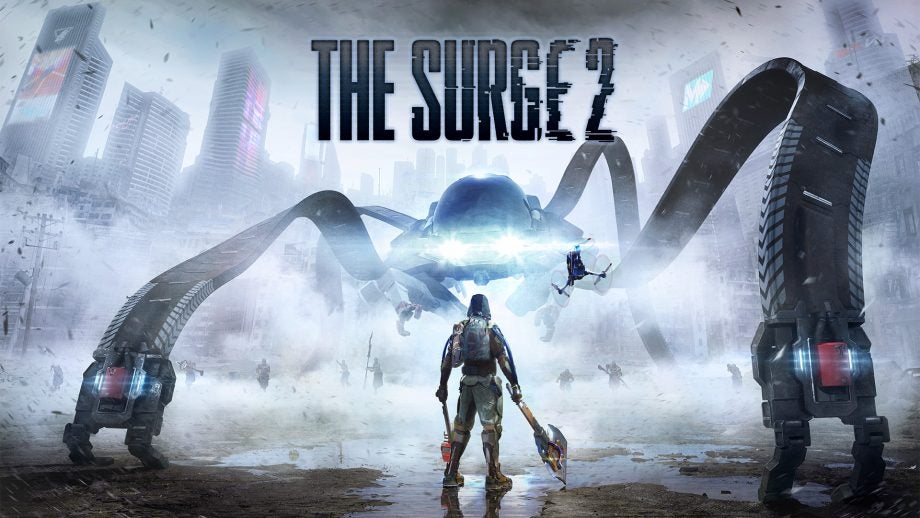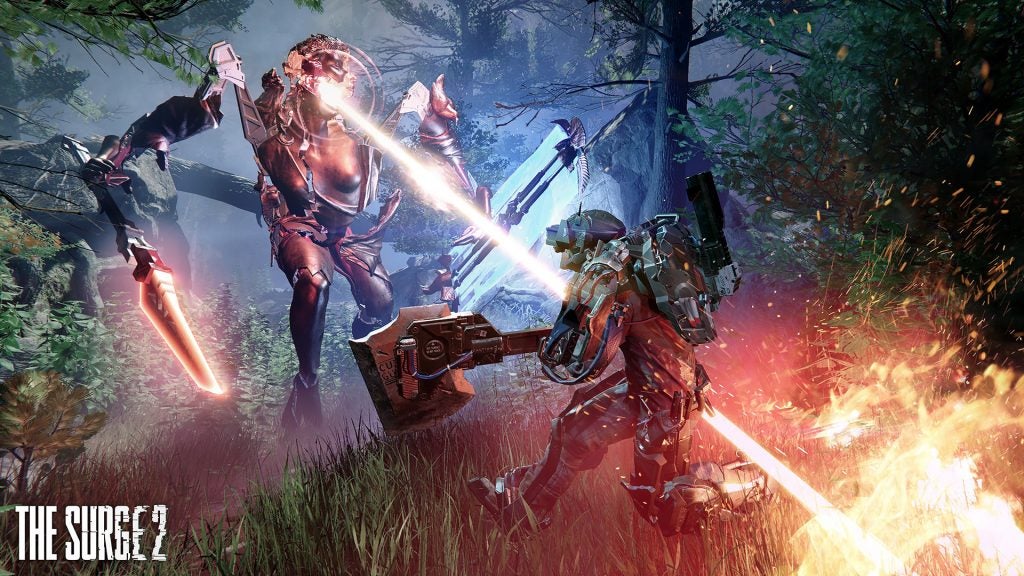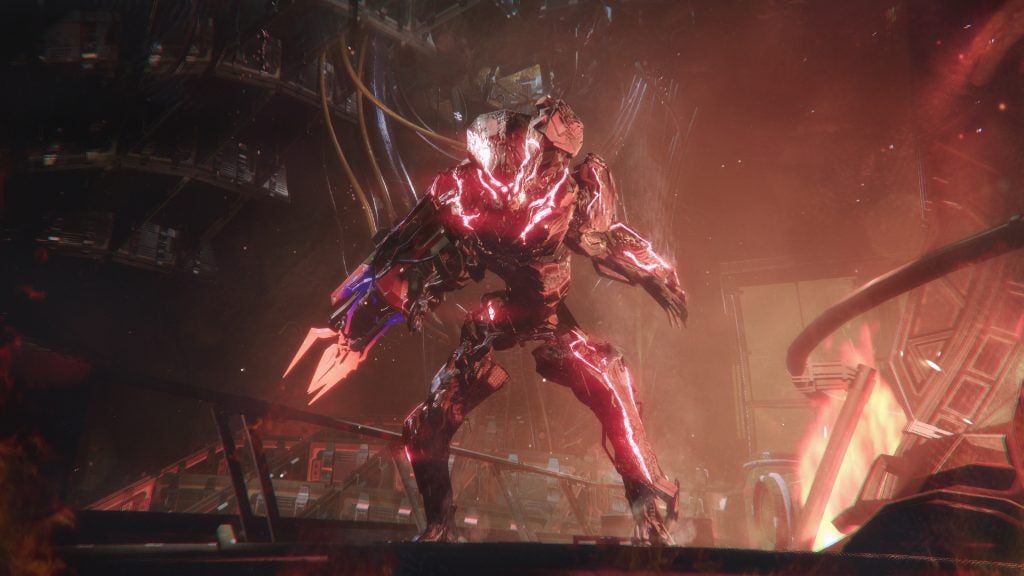The Surge 2 Review
The Surge 2 Review
Deck13 delivers a solid and satisfying sequel

Verdict
The Surge 2 is a refinement – rather than reimagining – of the Souls-like genre. It offers wonderfully compelling, meaty combat and a robust character-levelling system which will keep fans of the genre entertained for hours. But there’s little here that’ll entice newbies to the series.
Pros
- Brutal combat
- Fantastic loot system
- Great variety of weapons and armour
Cons
- Doesn't change much from the original
- Story is a bit underwhelming
Key Specifications
- Review Price: £44.99
- Developer: Deck13
- Genre: Action
- Platforms: PS4, Xbox One, PC
- Release Date: September 24, 2019
The Surge 2 is latest in a growing sea of hardcore, Souls-esque, RPGs to hit the market. As a game it’s not terribly original. In fact, at first glance it’s all but identical to the original The Surge, outside of the fact you create your character, rather than step into the shoes of original protagonist, Warren.
But, despite the lack of significant changes, The Surge 2’s core combat mechanics are still some of the best you’ll find and make it a great option for any Dark Souls fan looking for their next fix.
The game will feel familiar to anyone that’s played any Souls-like game. For those that missed it, Souls-games are titles inspired by the uber difficult Dark Souls series by developer FromSoftware. They see you navigate an open world, exploring vast locales battling challenging enemies while spending experience points to level up your character and upgrade your equipment.
Related: Best PS4 Games

The only difference between the Surge 2 and Dark Souls is that it has an overtly sci-fi setting where you’re moving between MedBays, rather than Bonfires, and spend scrap instead of souls.
So far, so dull? That’s what I thought at first. But The Surge 2 manages to differentiate itself through its refined combat and equipment mechanics. This is apparent the moment you finish building your character and are dropped into the game’s narrative.
Whatever character you build, you take the role of a survivor of a plane crash that occurred when the nanite menace from the previous game first escaped from tech conglomerate CREO’s facility. The plot is decent, but takes a backseat to make room for action much of the time.
Diving into the combat things are instantly satisfying. The Surge 2 keeps the same rig system as the first game. This sees you upgrade your character using cybernetic implants and a variety of high, and low, tech futuristic weapons to dismember anything that gets in your way.
The system is wonderfully intuitive with each set of armour and weapon falling into a specific, clearly explained category. If you’re after a speedy character then Operator (light armour) is the way to go. If you’re a tank player then Goliath-class armour is the best. After something in-between? Then you’ll want to stick to Sentinel armour.
Related: Best Xbox One Games

The same goes with weapons. Off the bat you’ll get to use everything from staffs to chainsaws and hydraulic drill style “rigged” weapons. Again, every category is neatly sorted and explained in the inventory menu. From there you can load your rig with augments, which can be used to boost your character’s core skills or add injectables to your loadout. Injectables play the same role as potions in regular RPGs. They use energy (the Surge’s version of mana) to do things like heal you, or temporarily boost attack power.
What makes the system great is that every weapon and piece of armour has a different flow and pattern that’s reflected in your character’s movement. Heavy duty weapons and Goliath loadouts make it feel like you’re piloting a Titanfall mech and have a pleasing clout when you exchange blows with your foes. Nimble operators fly about the battlefield and have a distinct “sting like a bee” Ultraman feel, but get sent flying around the map when hit.
Yes, this was all in the original game, but it’s made better through a series of subtle refinements in The Surge 2. For starters, Deck13 has ditched the weapon specialisation feature of the original game. This was an annoying mechanic that let you develop an “affinity” with a weapon type the more you used it. I was never a fan as it stifled experimentation, encouraging you to pick and stick with one playstyle early on.
The Surge 2, by comparison, urges you to experiment with different combinations and play styles through its new loadout and quick swap systems.
As well as ditching the affinity system, The Surge 2 features new shortcuts that let you switch between favorited weapons and armour sets without pausing the game. This is important as it lets you change what you’re using to match the specific type of enemy or environment you’re facing.
Related: Best PC Games

About to jump into a bunch of squishy human looters? Switch to a weapon with high un-armoured damage. Got a nanite problem? Then you’ll want a slasher with high anti-nanite damage. Going through a hazardous environment? Then you should switch to an armour sweat with high corrosion resistance. You get the idea.
The reworked block and diversified choice of injectables are two other key improvements. The block system is a direct lift of the system seen in For Honor that lets you parry enemy attacks by correctly guessing their direction. It’s a key feature that can reverse the tide of battle and super important for tank characters in Goliath armour with with slow attack speeds. On several occasions I found myself using it to create openings against enemies that previously felt unstoppable.
The injectables on offer in The Surge 2 offer a lot more diversity than the first game. In the original you had basic healing and stat boosting options. It’s similar in The Surge 2, but there’s a much wider set to choose from and many have more refined, specific qualities. One of my favorites is a health booster that converts damage inflicted on enemies into health for a limited time. This sounds small but it completely changed the eb and flow of battles into something more akin to Bloodborne than Dark Souls.
Related: PS5

Finally, the execution and looting systems have been given a similar spruce. Executions work the same way as before, letting you target a specific part of the enemy and cut it off once you’ve done enough damage. The animations are still wonderfully satisfying, but more importantly they once again directly feed into the game’s looting system.
In The Surge 2 most of your armour is collected from downed enemies. It’s not random either. If you want a specific bit of armour you’ll need to find an enemy wearing it and steal it from their dismembered limbs. This is a great feature that gives you a real incentive to hunt and target the game’s larger and more powerful enemies, even when you don’t necessarily have to. On more than one occasion I found myself sprinting back and forth through difficult sections hunting for a specific set piece of armour I needed to complete a set.
This is doubly important as the game’s plot, while on occasion interesting, feels like a transitional point in the series. The Surge 2 has a much more direct, obvious plot, than Dark Souls games, but it’s told in a similar way. Specifically it unfolds through interactions with NPCs and collecting recordings littered around the cityscape. Its premise is fairly straightforward, the nanites from the first game have escaped plunging the world into chaos.
Related: Xbox 2

The world you see is very different to the first game’s industrial factory setting, this time taking place in a giant open cityscape with a significantly larger, more diverse set of enemies and themed regions to explore. This is great and offers some welcome variety to the first game’s slightly by-numbers factory locale. But the plot itself feels like it focuses on world building more than telling a strong story.
Early on the main premise felt so weak that I accidentally ignored it and wandered into an advanced section of the map that I wasn’t meant to. This was fine for me as I enjoyed fighting the stronger enemies, but it causes some pacing issues later on as I’d learned some of the plot points out of order.
This, for me, sums up my entire experience of the story. After finishing the game I can safely say the promise of better loot provides a much more compelling incentive to explore than the main narrative. The Surge 2 isn’t the only Souls game to suffer from this issue – I felt the same about Remnant: From the Ashes – but it’s something to be aware of if you’re after a story driven RPG.
Should I buy The Surge 2?
The Surge 2 doesn’t do much to change the genre, but it gets all the basics right. Combat is nuanced, but has weight, and the game’s upgrade system is wonderfully tweakable. If you liked the first Surge, or are in the market for a new hardcore-Souls-like RPG, then The Surge 2 is a great choice.


